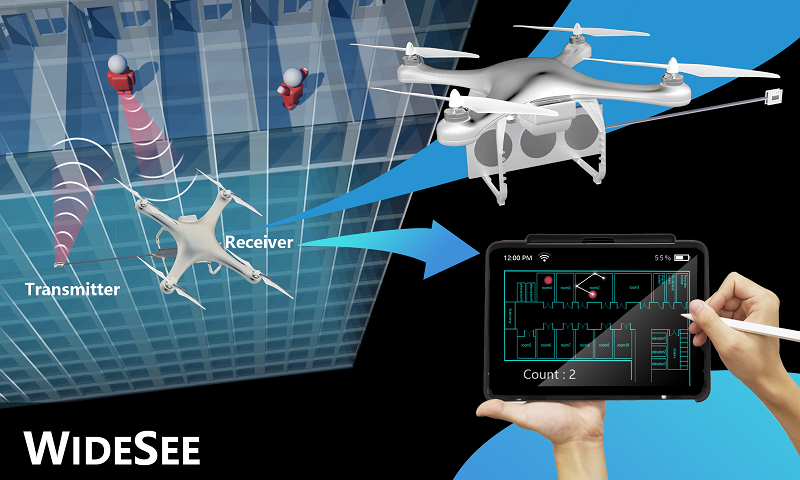⠀⠀⠀⠀⠀⠀⠀⠀⠀⠀⠀⠀⠀⠀⠀⠀
Jointly developed by engineers from University of Leeds, University of Massachusetts and Northwestern University in Xi’an in China the so-called WideSee system uses long-range radio waves to scan deep into a building.
Dr Zheng Wang, Associate Professor in the School of Computing at Leeds, said that the system has considerable advantages over existing wireless systems used by rescue workers. “Heat seeking cameras can identify the heat being radiated from a human body but in a blaze there is a high chance the cameras would be incapable of picking out the heat being generated by someone trapped in the building because of the more intense heat being given off by the fire,” he said.
To develop the system the researchers adapted a commercial wireless radio system called LoRa that was originally designed to connect objects on the Internet of Things, allowing devices on a closed network to share data – such as home appliances like lights or a heating system.
To address challenges related to interference, the team designed an antennae that sends the signals over a narrow angle of field. This reduces interference and also directs the signals to travel into the body of the building.
The system works like radar. Signals sent from the drone pass into the building and rebound off objects. The rebound signal – picked up by a receiver on the drone – are altered by the objects they have bounced off. Information from the drone is remotely sent back to a computer being monitored on the ground. Software processes the signals and gives the operator details about occupants in the building.
The system has been tested on an empty building in China where it was used to identify small groups of volunteers who were on the ninth floor.
Whilst the technology is currently only capable of locating one target at a time, the ultimate aim is to identify multiple humans in different rooms at the same time.
Professor Xiaojiang Chen from Northwest University in China, who co-authored the work, added that the team also plans to improve the system’s ability to detect non-moving targets. “Our findings showed that when the volunteers were walking or waving and the flying speed of the drone was reduced to 1 or 1.5 metres per second, there was at least a 96 per cent chance of being detected. If people were lying still, the system did not pick them up and the aim is for further research into the detection of non-moving targets.”
The research was described in a paper presented at the ACM SensSys ‘19 conference in New York.
Provided by The Engineer
Do you like our posts? Send a message to us with your feedback!


